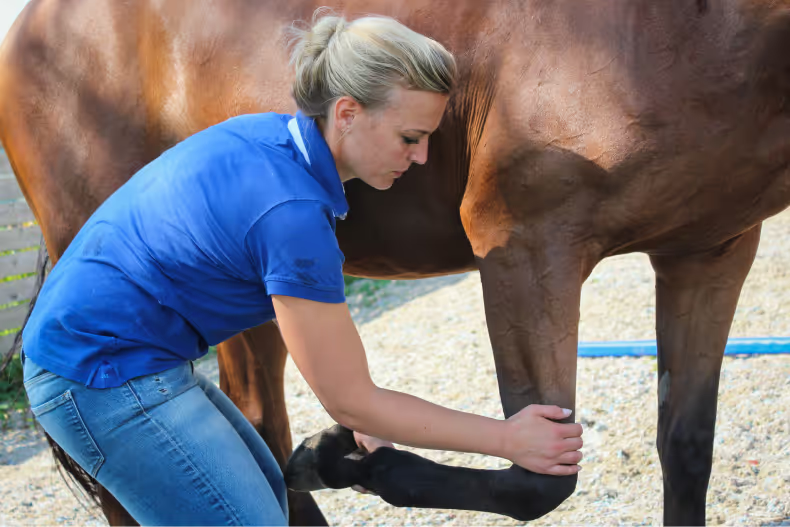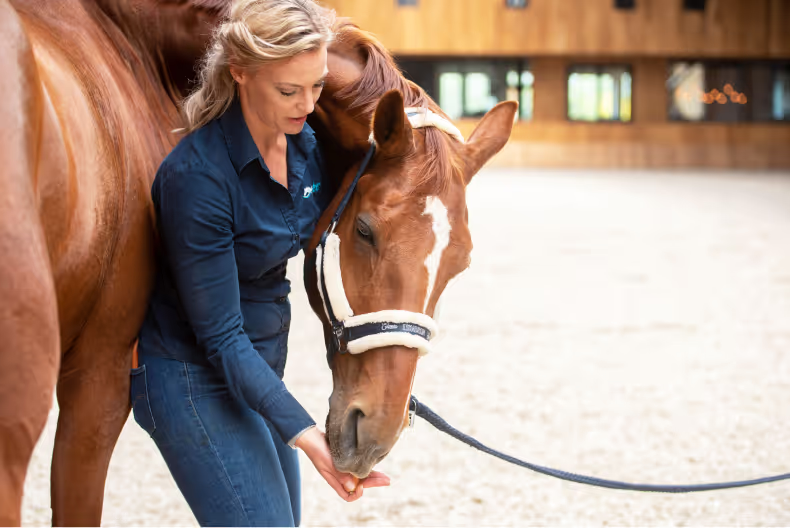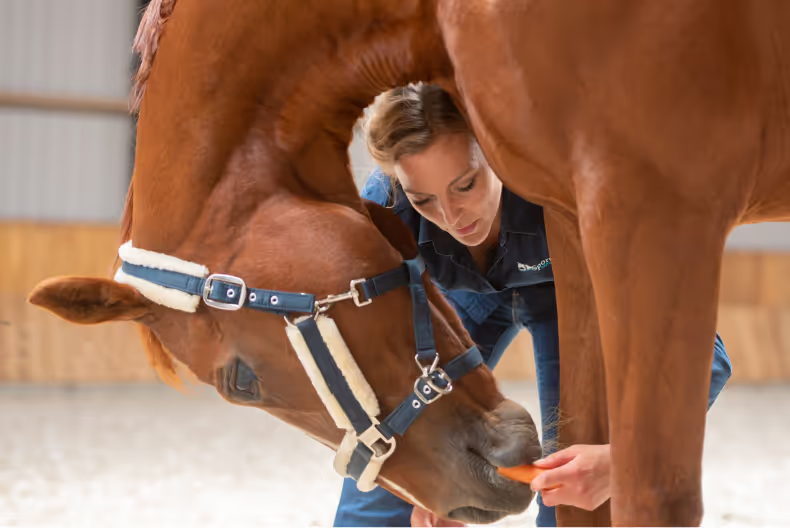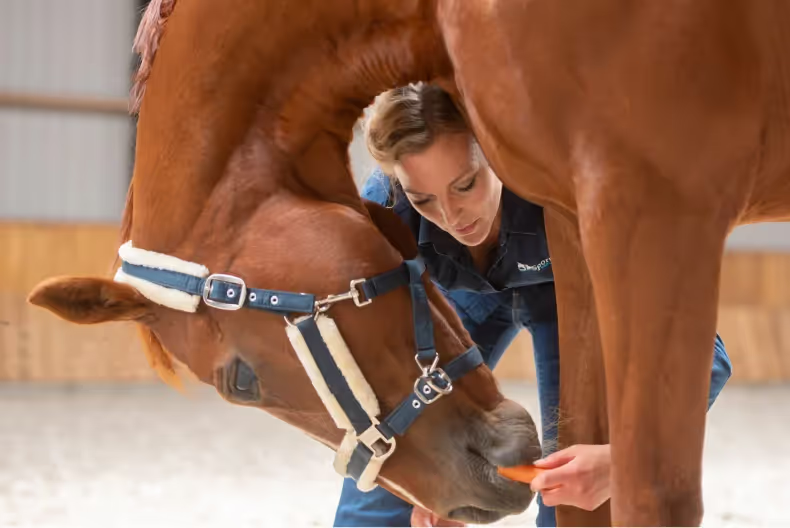
16 May 2024
Unfortunately, the road to recovery is rarely straightforward. Effective monitoring is vital to adjust the rehabilitation plan as needed. Fortunately, recent advancements have enabled us to monitor our horses in rehabilitation more objectively. Techniques like objective gait analysis offer valuable insights, allowing us to adjust rehabilitation strategies with greater precision.
Rehabilitation is typically divided into different phases, based on the stage of the horse's injury. Each phase is associated with general goals (see the table below), which should be complemented by tailored individual goals for the horse.
When designing a rehabilitation plan, it's crucial to adopt a comprehensive "full-body" approach. This is essential because compensation for an injury can impact other areas of the horse's body. Moreover, it's not uncommon for a horse to simultaneously have orthopaedic and internal medicine issues, both of which require attention and management within the rehabilitation plan.
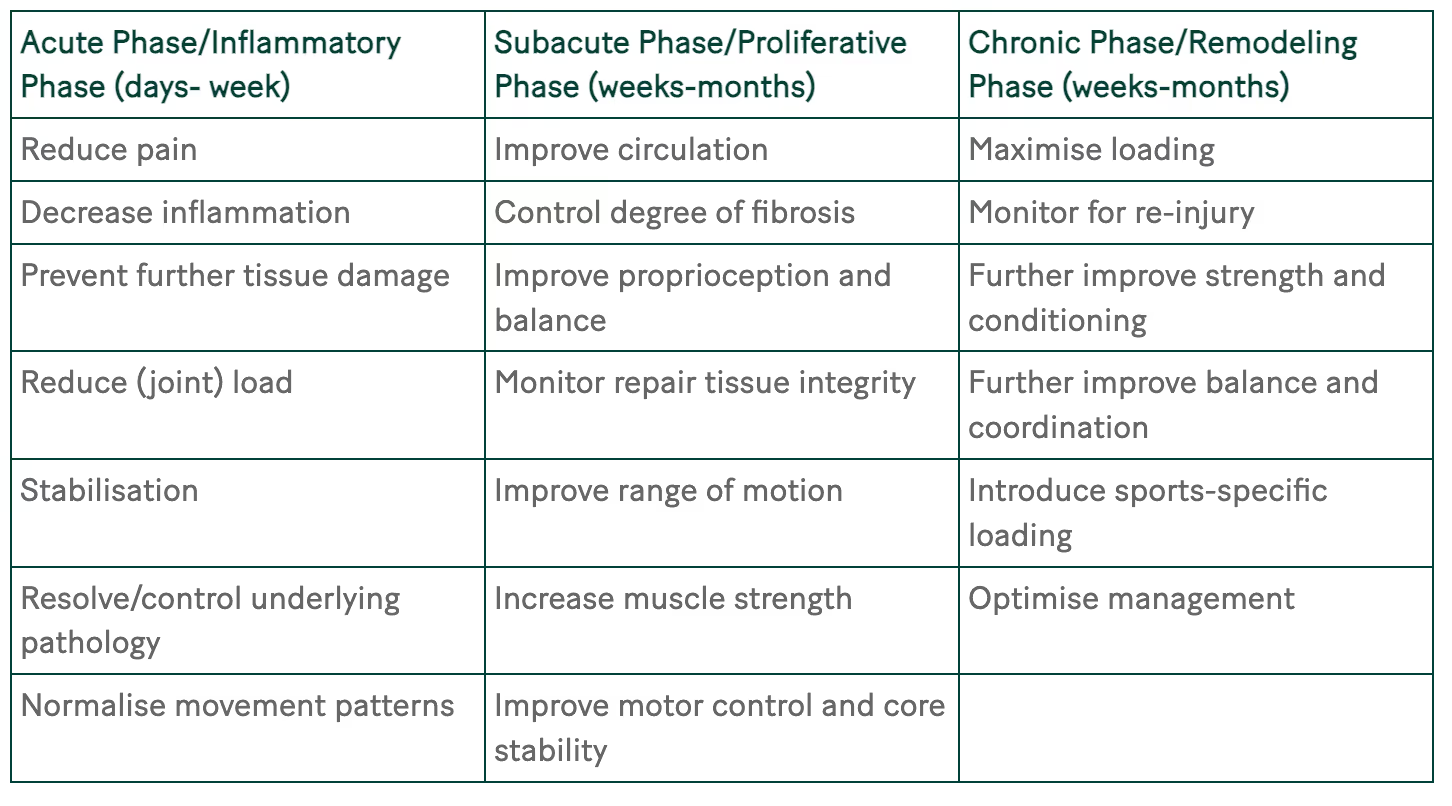
Table 1: General rehabilitation goals per phase of recovery (based on Haussler et al, The development of safe and effective rehabilitation protocols for horses, Equine Vet. Educ. 2020)
After a thorough clinical examination at the start of rehabilitation, a problem list can be made, leading to the development of an individual rehabilitation plan. For optimal results in the rehabilitation process, close collaboration is essential between the treating veterinarian and other professionals involved, such as the farrier, (physio)therapist, saddle maker, and instructor.
A rehabilitation plan is dynamic and changes in the frequency and intensity of the different components can be made after monitoring and evaluation of the horse.

Image 1: A rehabilitation plan is dynamic and consists of several components
During the acute phase, our primary goals include alleviating pain and reducing inflammation, while ensuring minimal and controlled loading of injured tissue. Depending on the specific injury and the temperament of the horse, this may involve activities such as hand-walking, groundwork, or gentle walking under saddle.
In terms of treatment, the reduction of pain and inflammation can be achieved through medication, cryotherapy, and other modalities with anti-inflammatory properties. Management-wise, our aim is to prevent further tissue damage, sometimes needing measures to protect the horse against itself. This includes making dietary adjustments to prevent excessive energy intake, which could result in explosive behaviour and unnecessary weight gain.
To improve the amount of control over horses during this phase, several strategies can be used. This includes scheduling the hand-walking during quiet periods, ensuring the presence of other calm horses nearby, using specialised halters or bridles for hand-walking, or opting for a calming supplement or sedative.
During this phase, our aim is to gradually increase tissue loading while also optimising proprioception, posture, and correcting suboptimal movement patterns. Improving proprioception in horses presents a challenge but is vital for optimal functionality and injury prevention.
Proprioception, the awareness of the body’s position in space, is essential for optimal functioning and is often affected by an injury. Therefore, it is an important part within the rehabilitation to optimal functionality.
Proprioceptive training methods vary and may include altering the surface the horse moves on (such as soft versus hard surfaces), utilising hydrotherapy, using cavaletti exercises, tactile stimulation, and more. The choice of proprioceptive training depends on various factors unique to each horse and injury.
The gradual increase in workload is crucial to avoid overloading the repairing tissue. This part of rehabilitation can take a long time and for owners, this may seem slow-paced and uneventful. Highlighting the upside of this phase can help, as it offers riders an ideal opportunity to refine their horse's foundational training, focusing on aspects like straightness, contact, and the effectiveness of aids.
Determining the timing of changes in the rehabilitation plan is based on the horse's progress. This involves gathering information through clinical examinations, imaging, and feedback from the owner or rehabilitation trainer. However, relying solely on subjective data can lead to overlooking signs of stagnation or deterioration—a significant pitfall in rehabilitation. Therefore, using objective monitoring is crucial for informed decision-making.
Regular objective gait analysis measurements conducted throughout the rehabilitation process facilitate the creation of a comprehensive case log. This log serves as a robust foundation for informed decision-making regarding adjustments to the rehabilitation plan.


During the final phases of rehabilitation, the workload can be increased to match the horse’s pre-injury level. Additionally, more 'sport-specific' training is added to the schedule. For jumping horses, this might mean low obstacles, while for dressage horses this could be collection and lateral exercises in all gaits.
Careful attention must be paid to the management of the horse, especially the management it had prior to the injury, because it can have contributed to the initial injury. Most injuries in sport horses are the result of relative overloading, so it is important to lower the risk factors for reinjury as much as possible.
Once the horse has fully recovered and resumed normal function, continued monitoring is advisable to promptly identify any potential changes. This monitoring ideally combines clinical examination with objective gait analysis, allowing for comparisons with (pre-)rehabilitation measurements.

